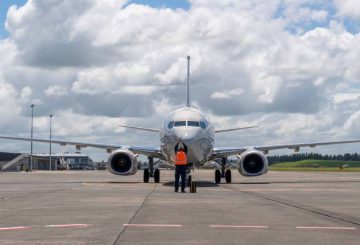69세의 인버카길 남성 레이몬드 혼은 치매에 걸렸음에도 불구하고 집을 떠난 지 5주 만에 숨진 채 발견되었습니다.검시관 보고서가 공개되었으나 아무런 책임도 지지 않았습니다.
은퇴한 트럭 운전사인 혼은 4년 전 뇌졸중이 발생한 후에야 간단한 메시지를 전달할 수 있었습니다.그는 2021년 2월 15일에 실종되었을 때 월슬리 하우스 휴게소에 살고 있었습니다.그날 아침 간호사 한 명이 약을 배달했고, 나중에 간호사가 돌아왔을 때 혼은 사라져 있었다.간호사는 그가 산책하러 간 줄 알았어요.
정오까지 혼이 돌아오지 않자 경찰은 이를 알리고 수색을 시작했다.CCTV 영상에는 오후 2시 20분에 퀸즈 파크의 한 놀이터에서 ‘흥분한’ 뿔이 찍혔는데, 이것이 그가 마지막으로 목격된 장면이었다.자원 봉사자를 포함한 많은 사람들이 동원된 이 수색 작업은 14일 동안 지속되었으나 그를 찾지 못한 채 2월 28일에 끝났다.
3월 26일, 블랙베리를 따던 한 여성이 와이호파이 강 근처에서 혼의 부패한 시체를 발견했다.나무에 가려진 탓에 이전 수색 작업 중에는 그의 시신이 발견되지 않았다.그는 근처 트랙에서 걸어온 것 같아서 마지막으로 목격된 곳과 가까웠던 것 같습니다.
사라지기 7개월 전, 혼은 발작을 일으켜 다리가 골절되었습니다.그는 여러 가지 건강 문제를 겪었고 치료를 받기 위해 월슬리 하우스로 이사했습니다.2020년 말, 그는 몸이 쇠약해졌고 체중도 크게 줄었습니다.하지만 의사는 그가 금방 혼란스럽거나 피곤해질 수도 있겠지만, 집 밖에서 규칙적으로 산책하는 것이 효과가 있다고 믿었습니다.
보고서에 따르면 혼은 어느 정도 독립성을 유지했으며 실종되기 전에 떠날 계획을 세운 흔적은 보이지 않았다.그는 2021년 3월에 또 다른 치료 평가를 받을 예정이었습니다.
신체 상태 때문에 사망 원인을 확인할 수 없었지만 부상 흔적은 없었습니다.경찰은 그의 죽음과 관련된 의심스러운 정황은 발견하지 못했습니다.검시관은 혼이 길을 잃고 나무 밑에서 쉬었다가 나중에 사망했을 가능성이 있다고 결론지었습니다.
이 사건은 취약한 사람들을 위한 추적 장치의 필요성에 대한 관심을 불러일으켰습니다.조사 결과가 공개된 후, 혼의 여동생은 그를 찾아준 모든 사람들의 노력에 감사를 표했다.




























































